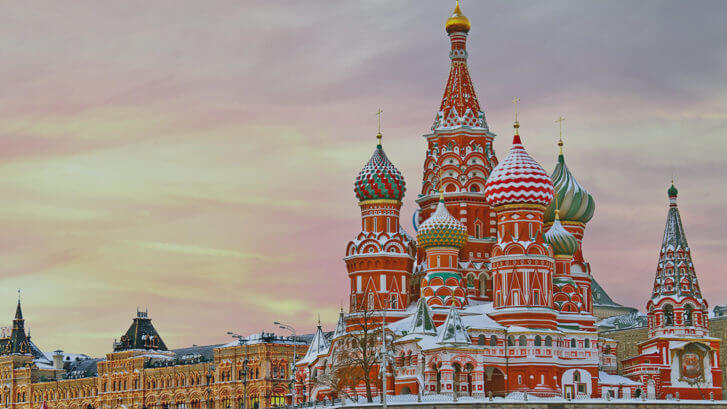‘Gross violations’
What does the first list of ‘designated persons’ under the UK’s Magnitsky sanctions regime tell us about how they will be used? It is, perhaps deliberately, a mixed bag of targets, a set of 49 individuals and organisations from four different countries, associated with some of the UK’s highest-profile foreign policy issues. Most, but not all, of them also seem designed to fit the category of ‘gross violation of human rights’ in the enabling Act (the Sanctions and Anti-Money Laundering Act 2018 (SAMLA)) – very broadly, the torture by state officials of those who expose corruption or promote human rights. Indeed, 25 of the targets, a bare majority are said to be associated with the case of Magnitsky himself, who died in a Russian prison in 2009, after making allegations of corruption.
The case of Magnitsky himself
A failure to investigate
A look at the detail (such as it is) in the annex to the government’s Financial Sanctions Notice, which purports to explain why each person has been designated, is instructive. The highest-profile Russian name is Alexander Bastrykin, whose entry tells us he ‘went to university with Vladimir Putin’ (though it not made clear how this is relevant), ‘was appointed First Deputy Prosecutor General and Head of the Investigative Committee under the Prosecutor’s Office on 22 June 2007’, and ‘continued as Chairman of the Investigative Committee after it became an independent body in January 2011’, before alleging that in this role ‘he was responsible for the investigation of the mistreatment and death of Sergei Magnitsky in detention, and intentionally or recklessly failed to fulfil that responsibility’.
The definition of ‘involved’
This last phrase matches the wording of the Regulations themselves, which say that such a failure would render the responsible person ‘involved’ in a relevant activity (such as political torture). It is, perhaps, a broader definition of ‘involved’ than might have been expected, or than was intended by SAMLA. (SAMLA does include a broad concept of conduct ‘connected with’ violations, but this does not extend to failures to investigate.)
Are the criteria met?
Nor is there any indication of how the minister reached the decision that the two criteria (which SAMLA requires) are met: that he had a ‘reasonable suspicion’ that Bastrykin was ‘involved’ in this way; and that sanctions are an ‘appropriate’ measure to take, in the light of the Regulations’ stated purpose (‘to deter, and provide accountability for’ the specified activities), and the ‘likely significant effects’ on the designated person. With respect to the latter, it is not clear whether the (presumed) lack of any assets to freeze in the UK counts in favour of sanctions (as there are fewer harms to Bastrykin to weigh in the balance), or against (as any positive impact is symbolic rather than practical).
‘Contributed significantly’
Similar points could be made about the listings of Aleksey Anichin, Gennady Karlov, and Natalya Vinogradova, who are all said to have ‘contributed significantly’ to Magnitsky’s death, including by failing to investigate complaints made by him about his mistreatment. Anichin and Karlov are also said to have concealed evidence of that mistreatment, and Vinogradova is said to have ‘provided support’ to those directly involved in it. It is not precisely clear whether or how these people could be said to have been ‘involved’ either in ‘gross violations’ within the meaning of SAMLA, or in the broader category of ‘activities’ covered by the Regulations (at least in the case of Vinogradova, given the Notice’s failure to specify what kind of ‘support’ she is said to have provided).
The role of judges
The list also includes judges for their decisions about keeping Magnitsky in prison, though the extent of their knowledge about his mistreatment there is not made clear. Indeed, neither SAMLA nor the Regulations are clear about what, if any, culpability is required to render a person ‘involved’.
Other targets on the list
The case of Jamal Khashoggi
A further 20 of the targets are said to have been involved in the murder of the journalist, Jamal Khasoggi, in the Saudi embassy in Istanbul, and the concealment of evidence afterwards. Notably, their listings make numerous references to the Crown Prince, but without making clear why this is relevant. Some of those listed have been acquitted by the Saudi courts, and/or included on US sanctions lists, which arguably makes it hard to see how the UK listings can help ‘provide accountability for’ the murder, or what role they can play in deterring similar activities in future.
Violations against the Rohingya in Myanmar (Burma)
The list also includes two senior officers of the Tatmadaw, the armed forces of Myanmar (Burma), who are said to have overseen serious human rights violations against the Rohingya population in Rakhine State in 2017 and 2019. Arguably, this places them squarely within the category of people who could be (but have not been) targeted by the EU’s Burma sanctions regime, to which the UK remains aligned during its post-Brexit transition period. It is interesting that the UK has chosen to include these names under its own autonomous regime, perhaps testing the water of what it can do while still bound by the EU system.
Violations against prisoners in North Korea
Finally, the list includes two departments of North Korean (DPRK) ministries, which are said to be responsible for serious violations against prisoners, including political prisoners. Though the EU has DPRK sanctions, they are aimed at tackling nuclear proliferation rather than protecting human rights, so the overlap is less of an issue. The point about lack of assets in the UK is surely relevant, however, as the practical utility of imposing these sanctions is surely close to nil.
What do these listings tell us?
The symbolism and politics of Magnitsky sanctions
What, then, do these listings tell us about how the Regulations will be used? The cynical answer to that could simply comprise one word: ‘politically’. Insofar as there is any purpose to these measures, it is certainly more symbolic than anything else, directed perhaps as much at a domestic audience, the EU and the US as much as the four countries directly involved.
The impact on individuals: is this a fair process?
Even accepting the legitimacy of this enterprise, it may fairly be questioned whether such purposes can justify the public naming of individuals in the context of what, in many cases, are allegations of crime. The impact on individuals is worse of course if there are already assets here, but even if not, the restrictions placed on them and others should not lightly be waived away. There are real issues here about the quality of the analysis and evidence being used, and the precedents that are set by the UK’s first foray into the new world of autonomous sanctions regimes.
About the author:

